You may not find this terribly rewarding unless you're included here, so this is a good time for casual and random browsers to turn back before they get too caught up in the sweep and majesty of the proceedings and can't let go.
Opera in Charlottesville, VA, & another Staunton walkabout
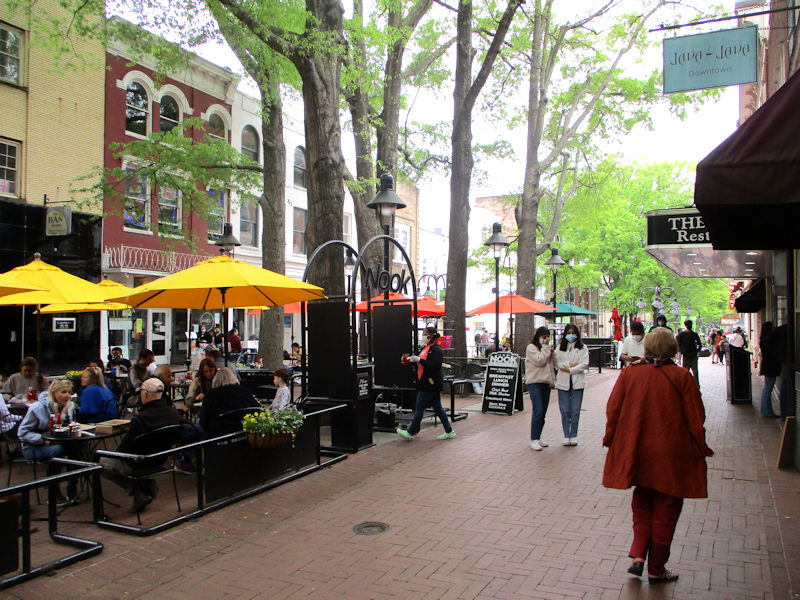
Charlottesville's 'Downtown Mall' is a 550-meter pedestrian commercial zone in the centre of the city, created along East Main Street in the 1970s and opened in 1976, now a major tourist destination in its own right.
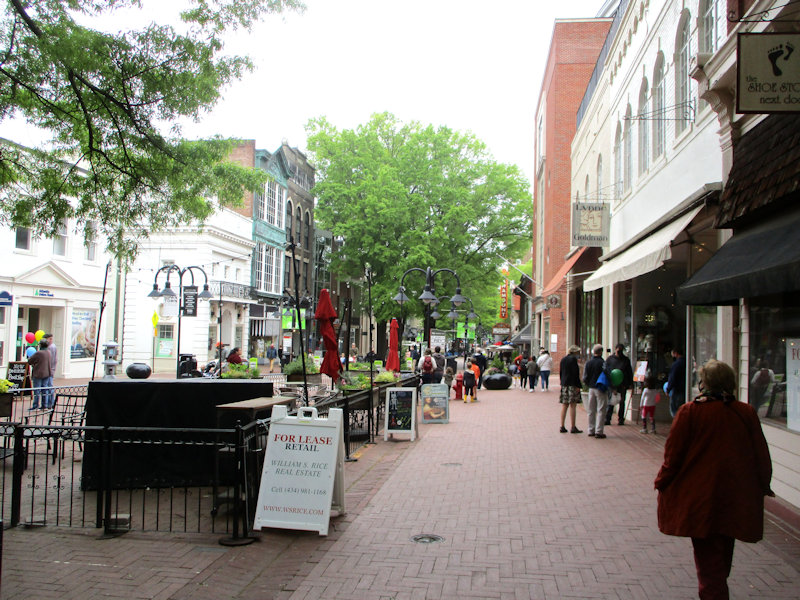
Now with more than 120 shops and 30 restaurants, it's a grand place to stroll about in, especially in fine weather.

We're actually here, 24 April 2021, with a purpose in mind, and there it is ahead, though we're early and will therefore stroll.

In late April, in a sophisticated town, nearly everyone is still wearing masks, except for the many eaters and drinkers in the al fresco dining areas.
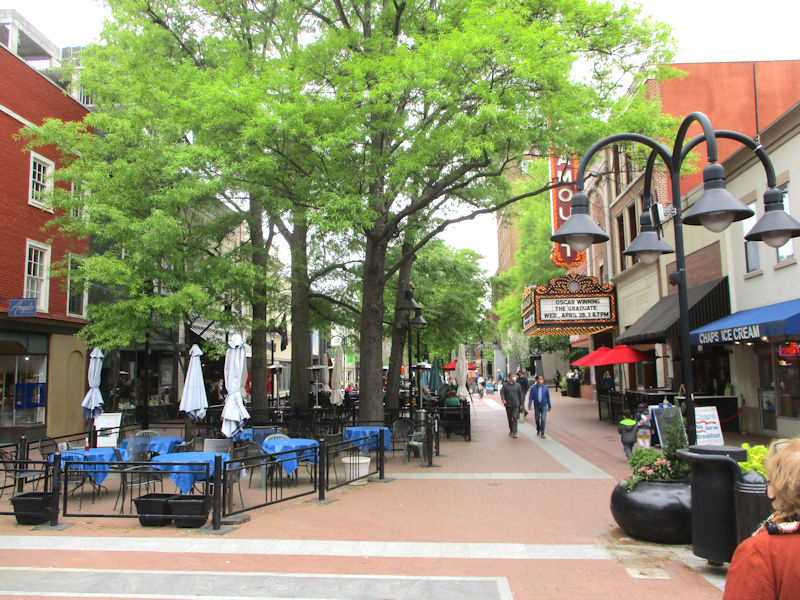
That's our objective for today, the elegant Paramount theatre, opened in 1931 as a 'cinema palace' of the era, but closed in 1974. Beginning in 1992, a non-profit group and the city began a thorough restoration project, and the enhanced theatre reopened in late 2004.
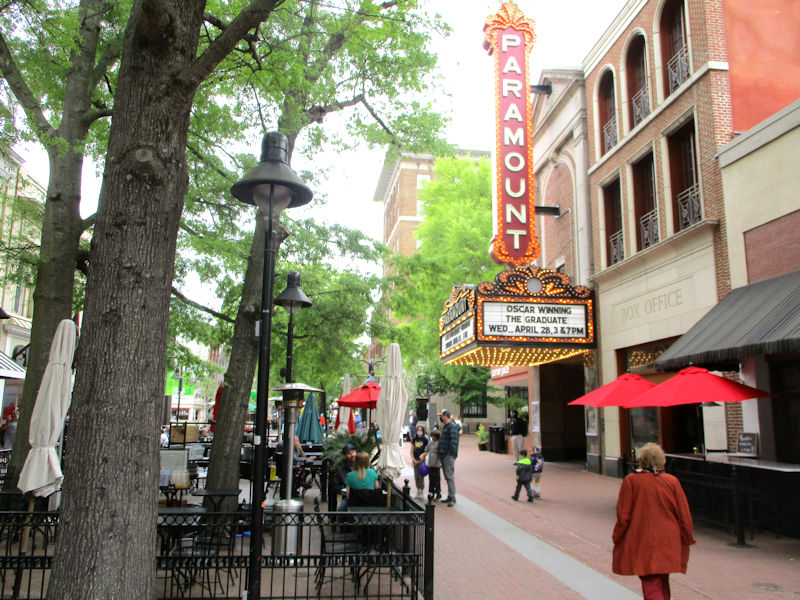
In addition to the restoration of the original theatre, new facilities were added and the place graduated into a 'regional performing arts center' -- with 'a modified fly loft, backstage areas, orchestra pit, and a three-story annex building with computerized box office, ballroom and meeting spaces, and a community rehearsal room'. The signature vertical sign out front was then restored as well and lit up for the first time in 2015.

We're still a bit early and will mosey on a bit farther till they're ready for us.

We're scouting out our favorite restaurant in town, to be honest, to make sure that it will be open when we emerge out onto the street once more.


Downtown symmetries

That's the Jefferson Theater, built in 1912 to host vaudeville acts and live performers (e.g., Houdini), as well as silent movies. It was renovated from 2006 to 2009 and is now a popular live music concert hall featuring rock, bluegrass, country, and metal acts, just now, apparently, coming out of its covid hibernation.

It's nearly time.
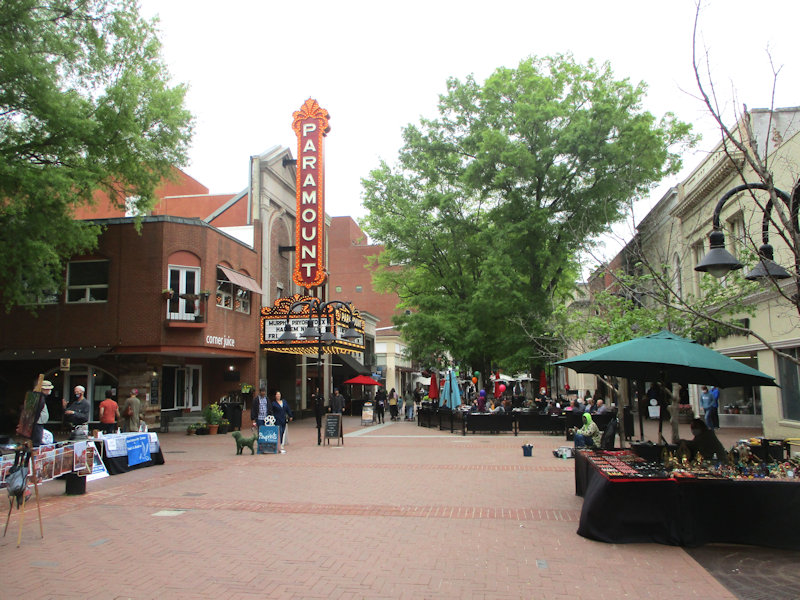
We're dashing to the front doors -- the feature is not due for a while yet, but they'll probably let us in to sit down for a while and doze.

With the help of some major donors and flights of minor ones, the Paramount has weathered the worst of the Trump Pandemic and is presently hosting a schedule of vintage films for a limited, socially-distanced audience.

Here's the April agenda -- we're here for the Turandot, mostly written by Puccini and finished off posthumously by someone else and first performed at La Scala in 1926. What we're going to be watching is a film of Zeffirelli's production of the opera performed at the Met in New York in 2016.

We're in early and wandering about a bit -- the Paramount really is grand; this is just an example, a side salon one floor up. The management has done a fine job of rerouting the flow of traffic to restrooms, concessions, etc., to respect the covid protocols.

For example, that upstairs bar is closed until further notice.
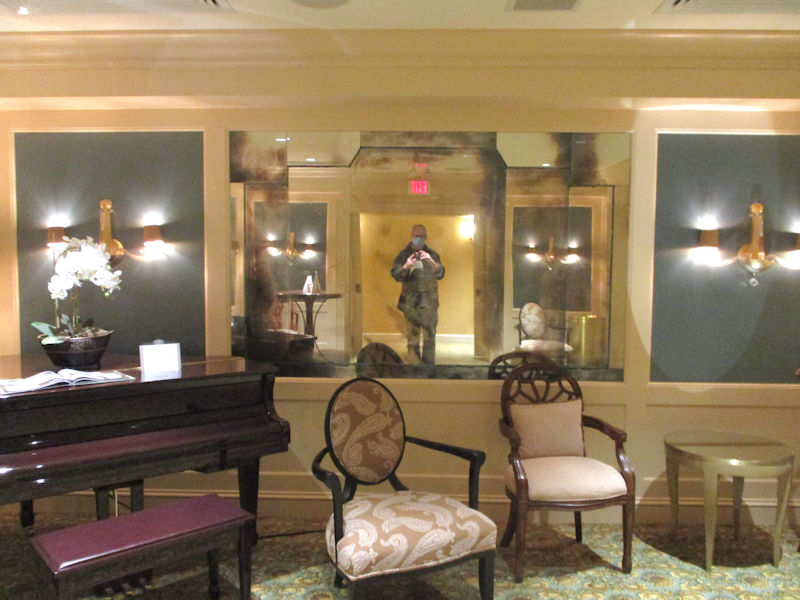
A furtive masked photographer

We're well seated up in the balcony, enjoying the ambience (the familiar 'follow us online') and waiting for the good stuff. No photos here of the interior, which is very nice -- flash or no-flash, it all comes out black.

The seats without advertising posters are reserved for us ticket holders (more should be coming along pretty soon), socially distanced by the seats with posters. (Remember when the ex-president's flunkies removed the management's distancing markers at the infamous Tulsa superspreader rally?)

There's no use trying to describe the plot of the opera, as it's ludicrous, but the production -- stage-settings, costumes, etc. -- was way beyond the normal imagination (and heavily criticized for that when Zeffirelli first produced it in 1987), but half of our party was extravagantly charmed by the whole thing. Four hours long.
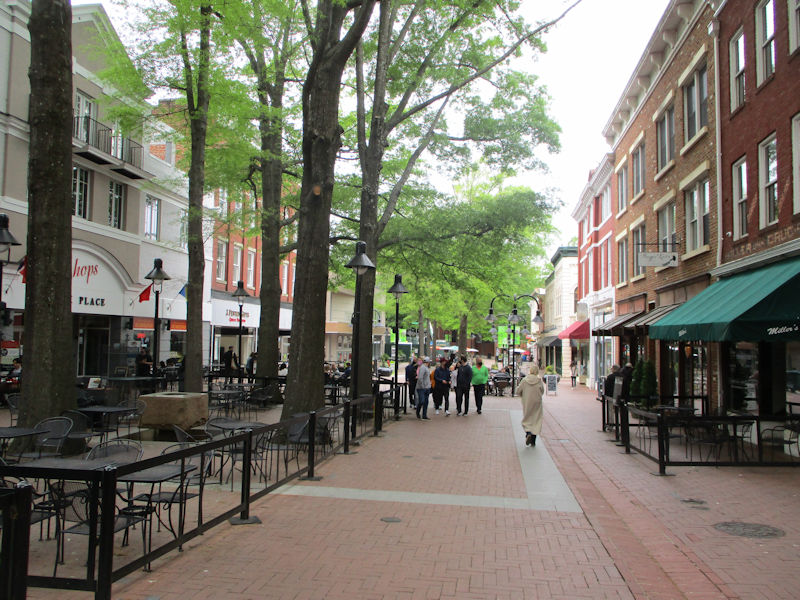
Now for a late lunch -- that (under the green awning) is the Miller's Downtown (whilst househunting near here in 2018, one of our party insisted on coming to Miller's every night for the oyster platter).

No oysters today, but lots of other good stuff (like the reuben).

And finally, emerging now (as several times before) into bucketing-down rain.

Not far from the Downtown Mall, here is what is (or at least should be) a controversial statue, placed here in the great southern statuing era of the early 20th century (1919) to commemorate the heroism and contributions of the Lewis and Clark expedition in the West, 1803-1806.

It's a statue to Lewis's and Clark's great expedition that does not forget to include Sacagawea, the Shoshone teenager who provided helpful guidance and, as an intepreter, probably saved their lives more than a few times, and is here depicted cowering obediently behind their manly forms.
Another Staunton, VA, walkabout
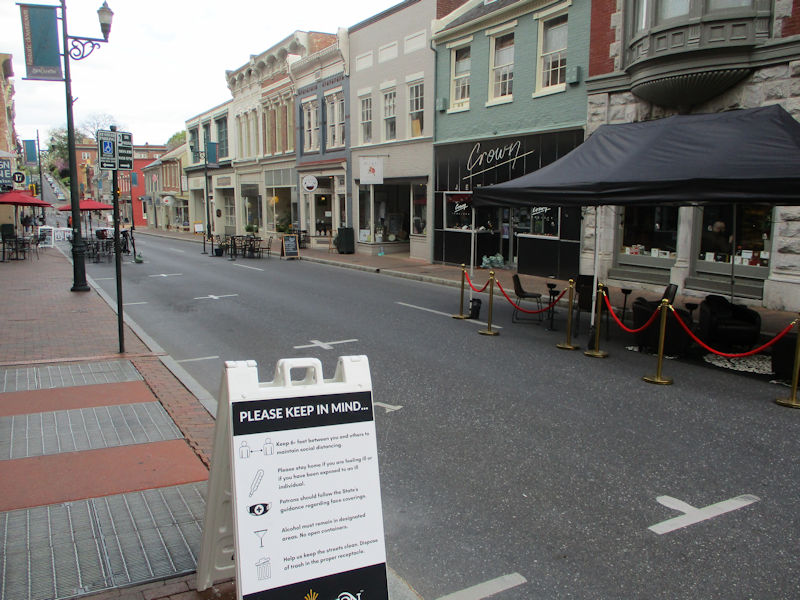
A weekend in late April, and the outdoor dining facilities are being set out on Beverley Street.

Nice composition for some of them
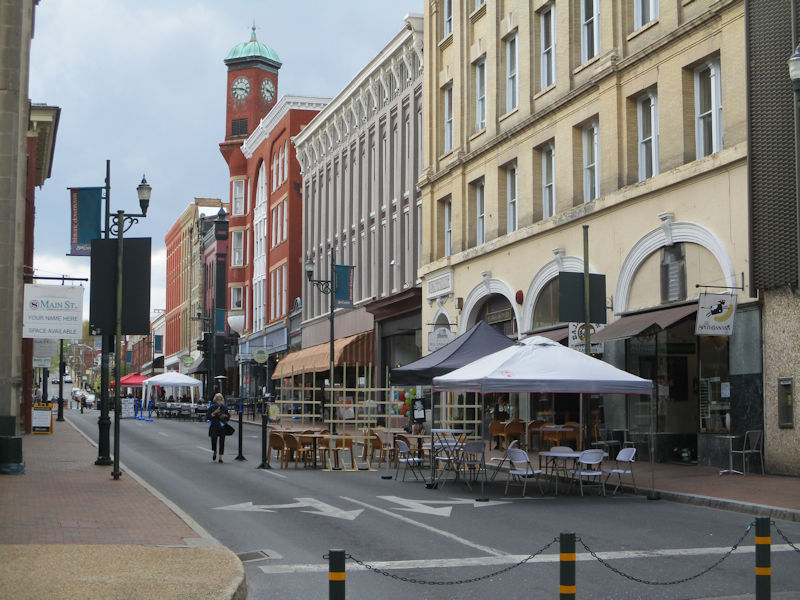
It's early for the diners and schmoozers, who we hope will soon descend upon the street in jostling hordes and keep our businesses alive until we recover from the Trump Recession.

Up the street through another grand procession of elaborate religious edifices

This is a walk along N. Lewis St, two blocks west of our N. Augusta Street.
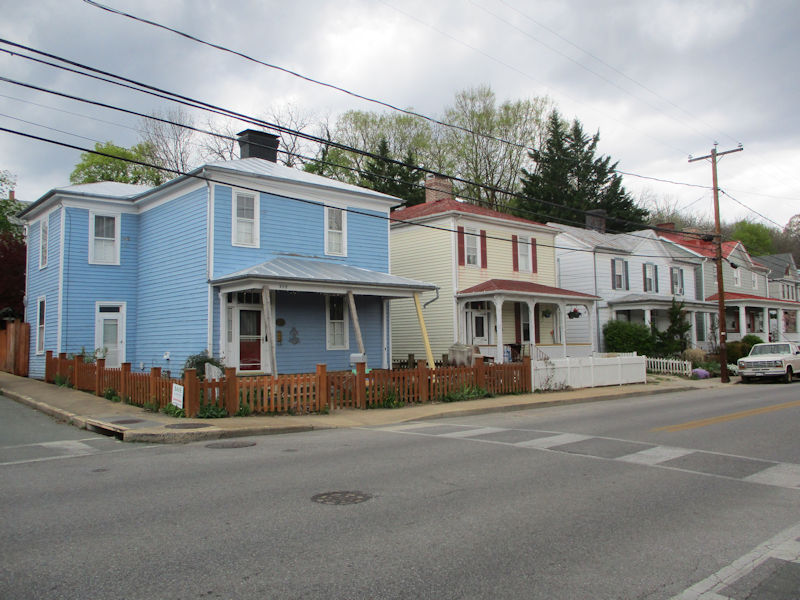
Intriguing old houses . . . but sometimes a few bandaids and some Scotch tape comes in handy

Some welcome infrastructure work on Central Ave -- underground pipes and cables, etc., and a newly bricked sidewalk; that's the Peruvian Chicken Man's van on the left, newly returned for the season (we've already hit him for a couple of Peruvian chickens).
We've described a bit of the recent history of Central Ave recently, and here that is again:
Urban Renewal with a vengeance. Some years ago, Staunton City (with Virginia Supreme Court approval in 1965) demolished 'a thriving and vibrant business and residential district, many owned or occupied by African Americans' (Staunton News Leader, 12 March 2020) between N. Central and N. Augusta Avenues, in hopes of attracting a fine big mall in mid-downtown; when no mall developers took the bait, we fetched up eventually with four nearly identical banks in a 250-meter row, all with continuously empty parking lots.

Here we are now on E. Frederick St, gazing at the Frederick Street 'small hotel', and . . .
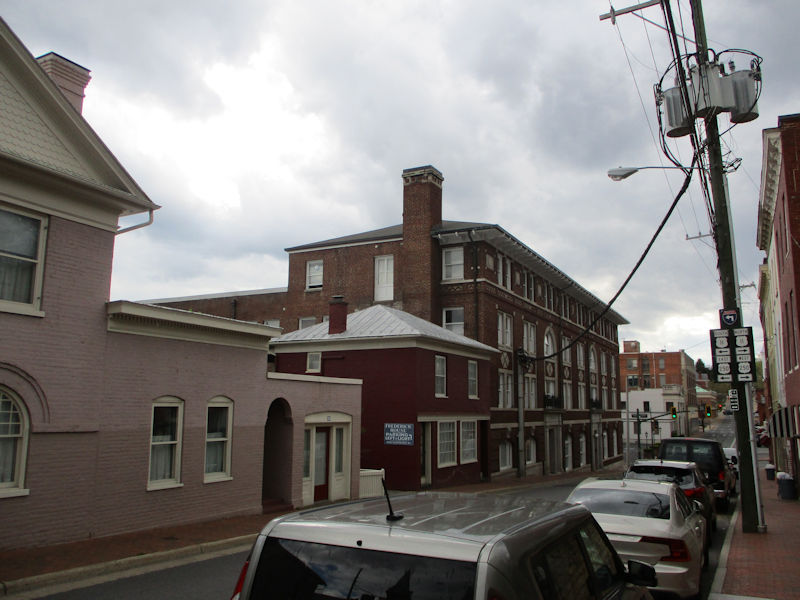
. . . a bit farther down E. Frederick, our Old Y condo. The main door into the lobby (engraved 'Boys Entrance' over the door) is there before us -- the official address of 41 N. Augusta is desperately out of date, and the splendiferous former main entrance on Augusta was long the entrance to McCormick's restaurant and is presently the front door of an elegant condo apartment.
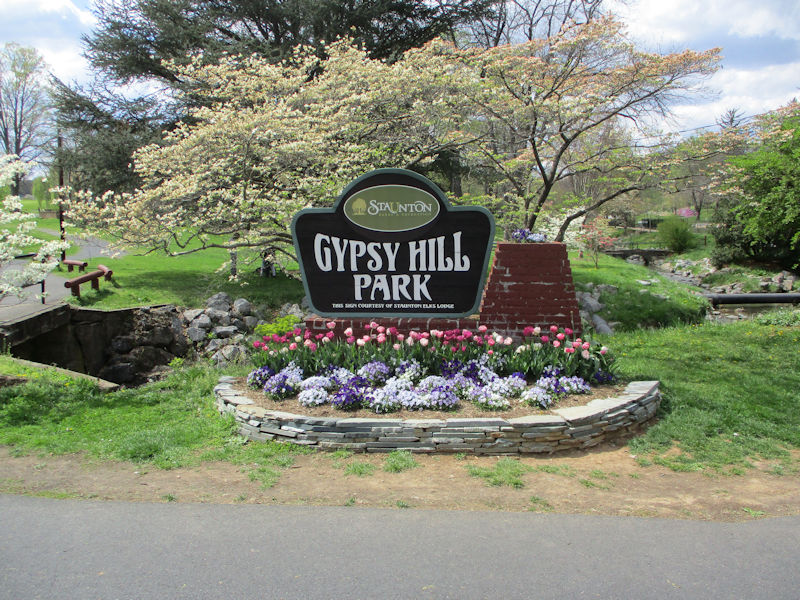
One of our best local parks, just 1km up the road from us
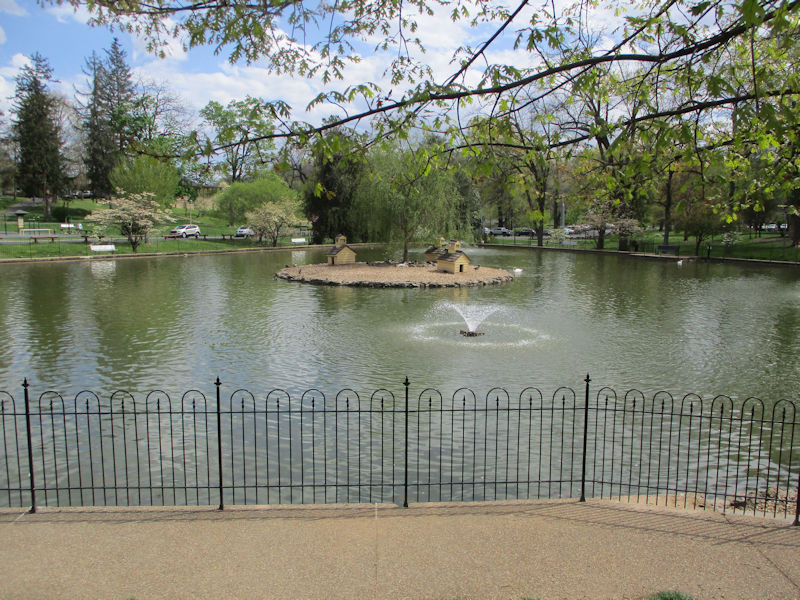
The Duck Pond

Among the last of the pink dogwood display for this year
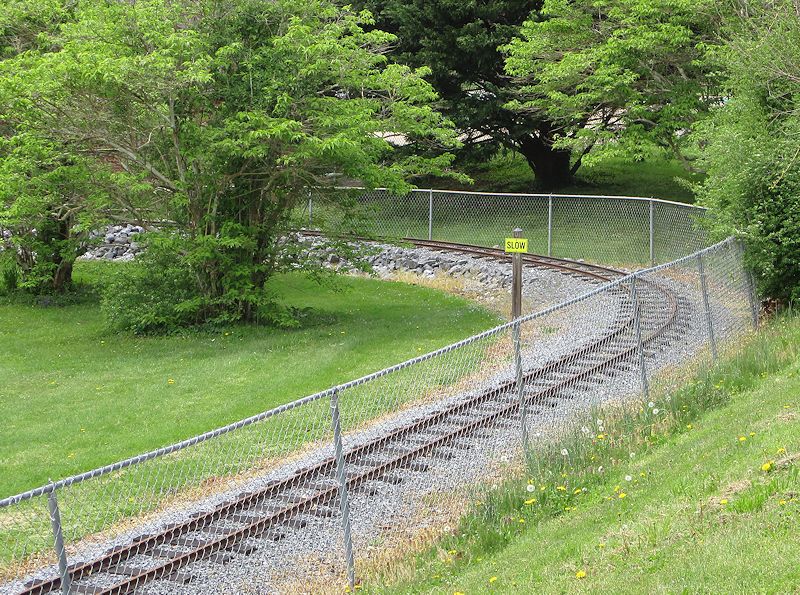
A tiny one-loop railroad for the little kids, with a 'slow' warning

A pink dogwood extravaganza (I adore pink dogwoods, and I see their short blooming adventure as symbolic of our lives, if I could put it that way; plus, they're the state tree of Virginia, so there's that).

The city's contribution to dogwood lore -- examples of seven dogwood varieties ranged in a row, with an explanatory guide in front. (I only like the pink ones. And maybe sometimes, in a good mood, the whites.)

This is the fascinating Stratton House, dated from circa 1894. We've done our version of a 'Deep Dive' into this subject, and have been able to learn next to nothing about its past or present functions.

Fronting onto N. Lewis St.
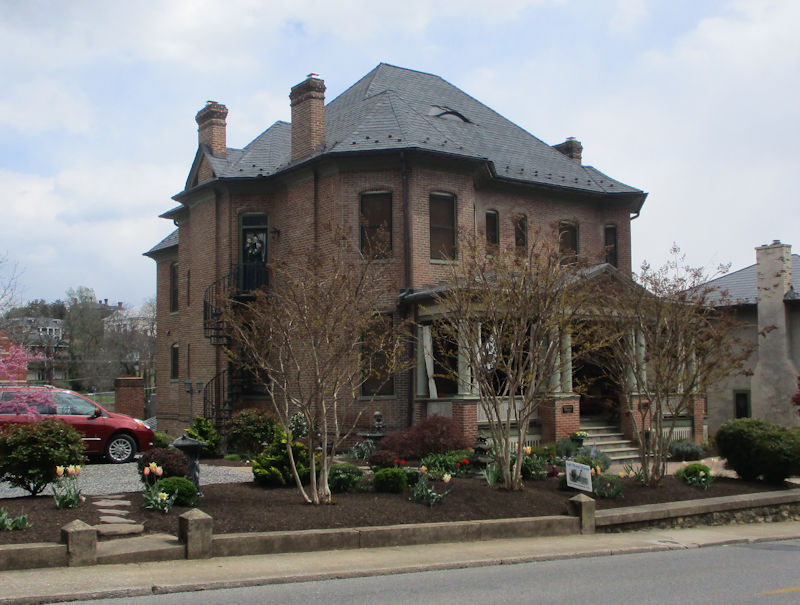
What a fascinating pile that thing is. And it's got a coach house down the back.
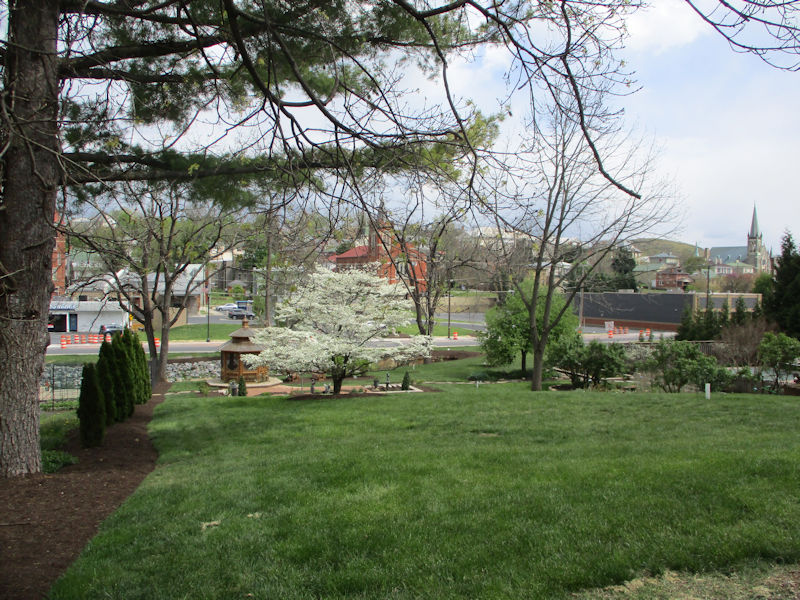
The gardens below Stratton House . . .
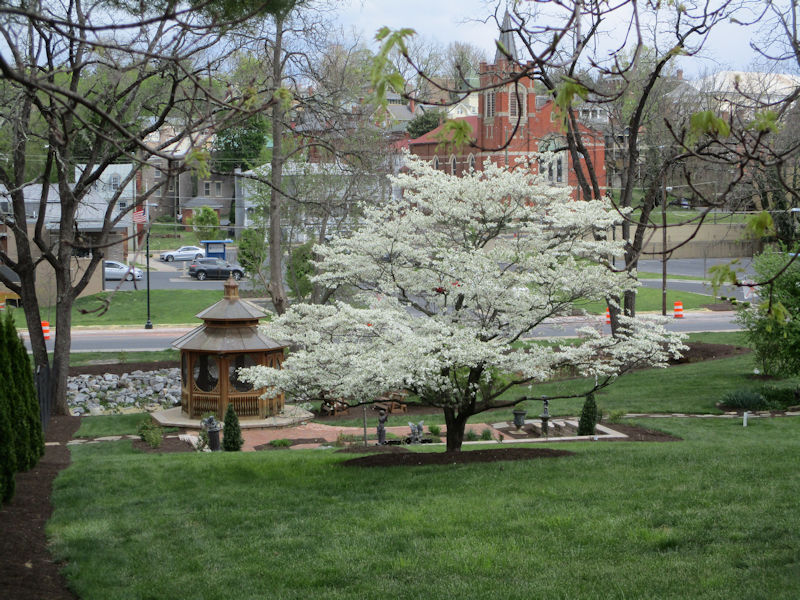
. . . zoomed
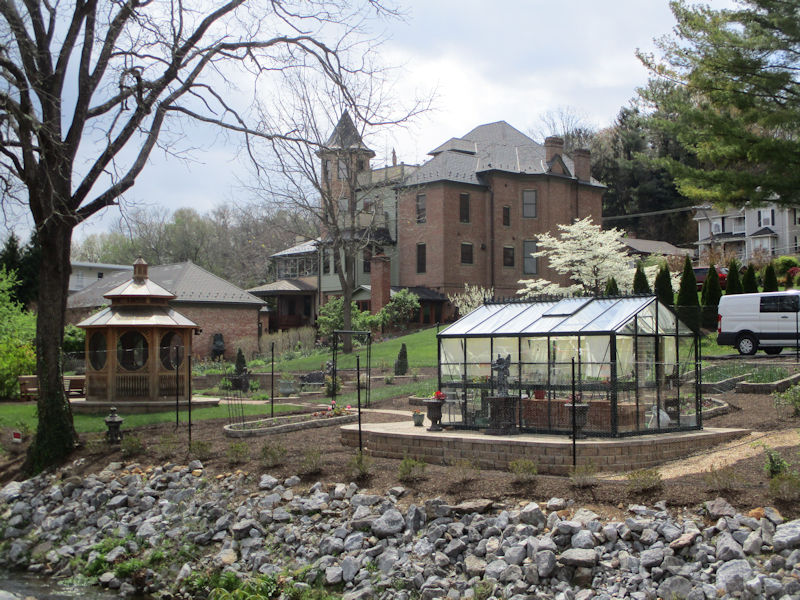
And from below. So far, we've been unable to discover what the Stratton House is all about. Unaccountably, it's not included in the city's brochure on historical buildings. There's an 'historic' Stratton office building down in the Wharf district; presumably there's a common origin for the name here.

More Lewis Street

We've always been told that 'the Lord works in mysterious ways', but there are a lot people around here who seem pretty certain of exactly what the Lord is thinking.

Back on N. Augusta St., approaching home
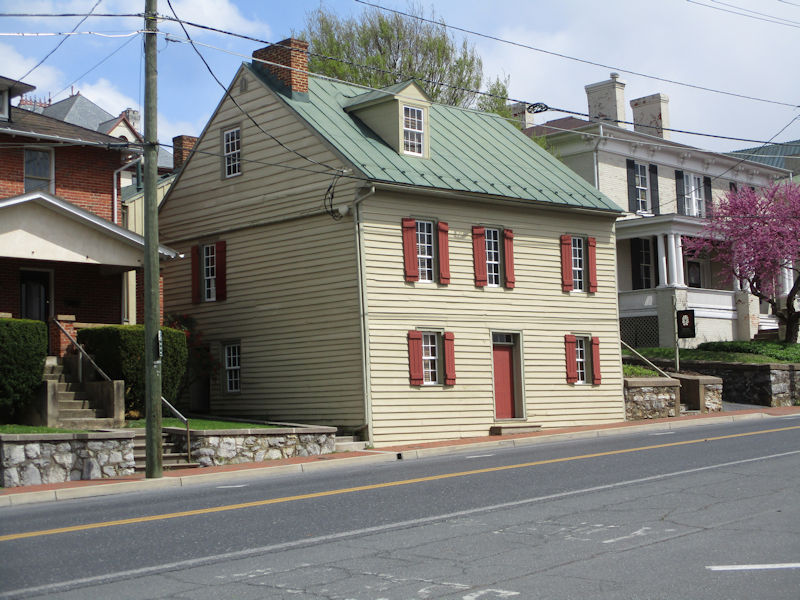
This little charmer was built in about 1800 as a loghouse, now with hand-hewn clapboard stuck on it -- it served as a stagecoach stop along the Valley Turnpike that passed along this road through town. It's now occupied, appropriately enough, by a firm of architects.

More pink dogwoods adorning St Francis's little community
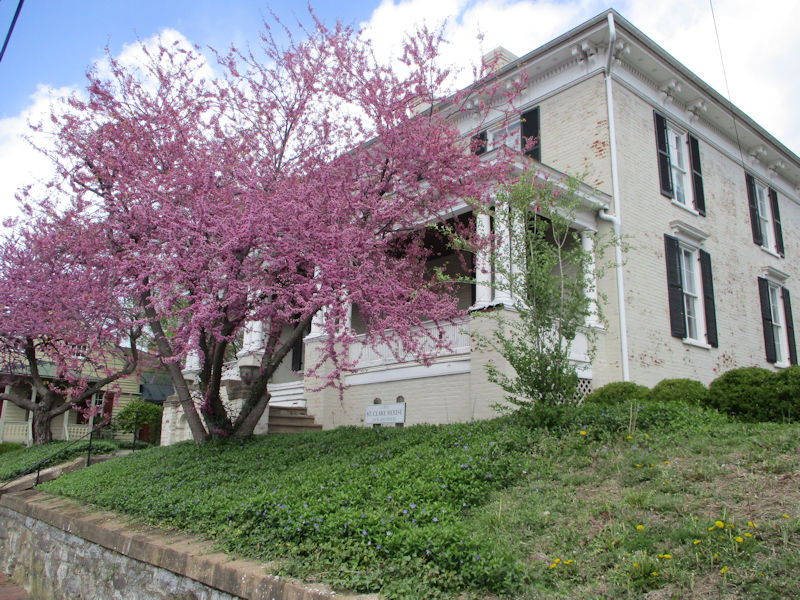
The St Clare House, ca. 1870
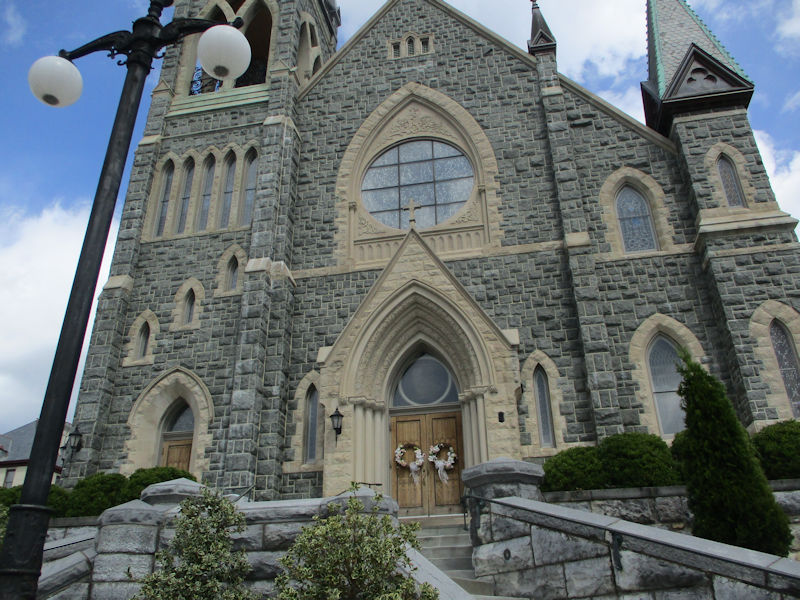
The Staunton architect T. J. Collins' 'Gothic Revival' church of St Francis of Assisi, apparently completed in 1895

And alongside it, as it were in a kind of campus, this was originally called the St Francis Academy and predates about 1870, but was converted into a convent in 1880 'and continues to serve the church today' (e.g., by offering free 'counseling' to young women in awkward circumstances).
Next up: The subtle joys of Greensboro, NC
 Dwight Peck's personal website
Dwight Peck's personal website





















































